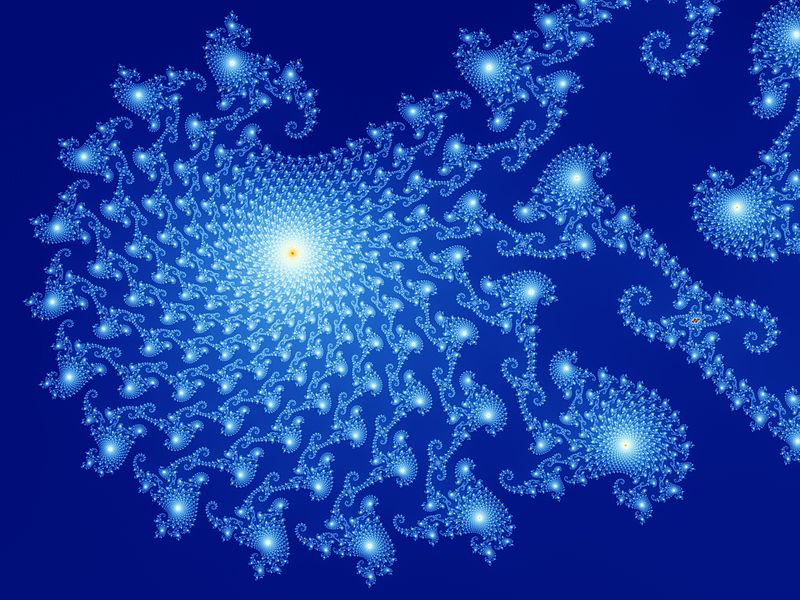Fairy tales are the fashionable thing in Hollywood and on TV. Every studio seems to be reinventing the classic tales – mostly with dire results. The successful new Tim Kring TV series Touch is much more original. Like the delightful film August Rush (which is based on the idea that people are mystically connected through music), Touch tells us that the world is built on numbers. The credit sequence alone is a work of art, showing a kaleidoscope of images drawn from the natural world and human society with diagrams of symbolic geometry superimposed. The story is built around a father (played by Keifer Sutherland) and his "autistic" son Jake, who won't speak or allow anyone to touch him. But the son has a gift with numbers. Naturally, in order to heighten the excitement, he is supposed to be "the next step in human evolution", and his gift enables him to predict the future, or "see" possible futures in the patterns of numbers he sees all around him. Once the father realizes his son is trying to communicate with him entirely through numbers, he also learns that the boy is detecting examples of human suffering and potentialities for disaster, which by following the clues his son gives him he can begin to avert. He becomes an "invisible knight", doing good to people without their realizing it. Each episode is constructed around several plot threads involving characters in different continents whose stories interweave and are all resolved in the final moments of the episode. Quite often they involve mobile phones or the internet – maybe the first time these aspects of modernity have been fully integrated into a fairy tale.
Apart from its entertainment value, is there anything educational going on here? As I said in Beauty for Truth's Sake, the idea that the world is built of numbers, that numbers are in a sense "God's thoughts", goes back a long way (at least to Pythagoras) and very deep (the foundations of both art and science). The English writer John Michell once said, "The mathematical rules of the universe are visible to men in the form of beauty." It is this intuition, which I believe is valid, that Touch is trying to evoke (or the cynical might say is trying to exploit), along with the sense of providence, meaningful coincidence, and the natural moral order (though without explicit mention of God). I called it a fairy tale, and like all true fairy tales (according to Tolkien) the final resolution takes place through eucatastrophe. For all I know the series may flounder and lose its way later on, but it is off to a great start, and if it sends people off to look into the mysteries of the Golden Ratio or Fibonacci series, or just to explore the wonders of mathematics with writers like Clifford A. Pickover (see The Loom of God), or Michael S. Schneider (see his Constructing the Universe, that in itself is a good thing.
There is a further humane message in the series. It is that human beings are all connected, that we are all in relationship, and that we are meant to cooperate and work together, to help each other without seeking reward. Mathematics, beauty, and love are all connected. Even in prime time.
Apart from its entertainment value, is there anything educational going on here? As I said in Beauty for Truth's Sake, the idea that the world is built of numbers, that numbers are in a sense "God's thoughts", goes back a long way (at least to Pythagoras) and very deep (the foundations of both art and science). The English writer John Michell once said, "The mathematical rules of the universe are visible to men in the form of beauty." It is this intuition, which I believe is valid, that Touch is trying to evoke (or the cynical might say is trying to exploit), along with the sense of providence, meaningful coincidence, and the natural moral order (though without explicit mention of God). I called it a fairy tale, and like all true fairy tales (according to Tolkien) the final resolution takes place through eucatastrophe. For all I know the series may flounder and lose its way later on, but it is off to a great start, and if it sends people off to look into the mysteries of the Golden Ratio or Fibonacci series, or just to explore the wonders of mathematics with writers like Clifford A. Pickover (see The Loom of God), or Michael S. Schneider (see his Constructing the Universe, that in itself is a good thing.
There is a further humane message in the series. It is that human beings are all connected, that we are all in relationship, and that we are meant to cooperate and work together, to help each other without seeking reward. Mathematics, beauty, and love are all connected. Even in prime time.



















